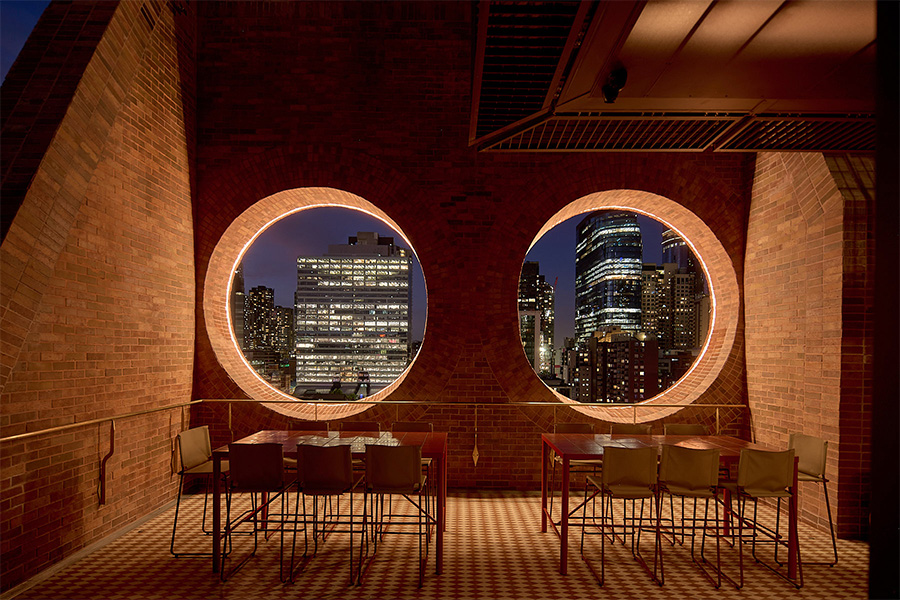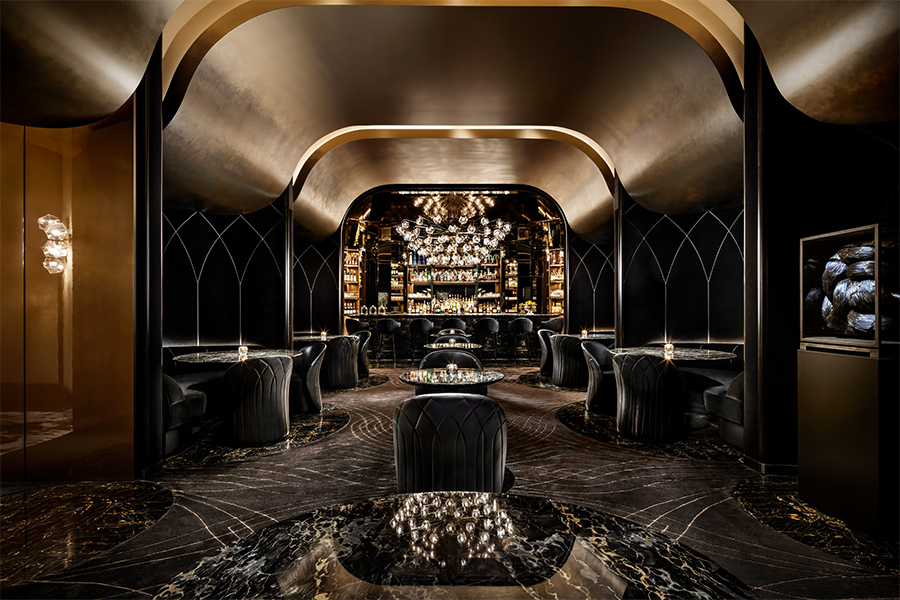Rok Oman and Špela Videčnik established Ofis Architects in their home city of Ljubljana, Slovenia after studying together in London and at the Harvard Graduate School of Design. As the practice grew, they established satellite offices in Paris and Moscow, but most of their projects—a mix of adaptive reuse and inventive ground-up structures—are still close to home. Most recently, they completed the Hotel Bohinj. Located in northwestern Slovenia, near the Italian and Austrian borders, the hotel is the brainchild of young Slovenian entrepreneur Damian Merlak, who invited the duo to transform the former Hotel Kimpas on the mountainous site.
“We explored the original structure, stripping away a piece at a time without knowing what we would find,” recalls Oman. “It was a step-by-step intervention, like surgery.” Using locally sourced larch, they created an exoskeleton of wood beams that incorporate balconies and give the hotel a distinctive identity, reinforced by interiors that draw on the rich cultural heritage of the region.

Local cultural heritage and traditional motifs form the lounge’s rustic interiors
“Everything was crafted by local carpenters and our designs drew on traditional motifs,” says Videčnik. The hotel logo refers to a local sculpture of the four men who first climbed Mount Triglav, the highest peak in the country and a national symbol, and a variant of that is carried through to bed and table linens. The Countryside room, a snug lounge just inside the entry, features perforated wood HVAC screens (a traditional feature of Slovenian homes), a checkerboard of cabinets and bookshelves, and chairs with stylized flower cutouts, all fabricated from untreated larch. The lofty foyer has a ceiling of wood roof shingles projecting downwards, while the reception desk is composed of a planed larch log.
Meanwhile, the 69 guestrooms have lamps that resemble tree branches and a jagged LED-lit incision in the headboards evokes the skyline of the Julian Alps. Long corridors are dramatized with photo murals of traditional Slovenian hay racks: a diagonal tracery printed onto wallpaper, ceilings, and carpets, alternating with wood frames that mark the guestroom entries. As Oman explains, “it creates an illusion of three-dimensionality, while introducing visitors to a local treasure that is fast disappearing and ought to be preserved.”
This article originally appeared in HD’s October 2021 issue.
More from HD:
Nightlife Entrepreneur Andy Masi Grows His F&B Empire
Sustainable, Locally Sourced Materials Flourish at Casa Hormiga
Hotel Kansas City Balances Grit and Glamour







